Most Popular
Subway Stories
[Subway Stories] Jongno 3-ga is where old meets new
From makgeolli restaurants, a UNESCO world heritage site to gay bars, the bustling district remains a cultural focal point for Seoulites old and young
By Yim Hyun-suPublished : May 8, 2022 - 14:24
The following is part of Seoul Subway Stories -- a newly launched Korea Herald series exploring subway stations and their surrounding areas across the city. – Ed.
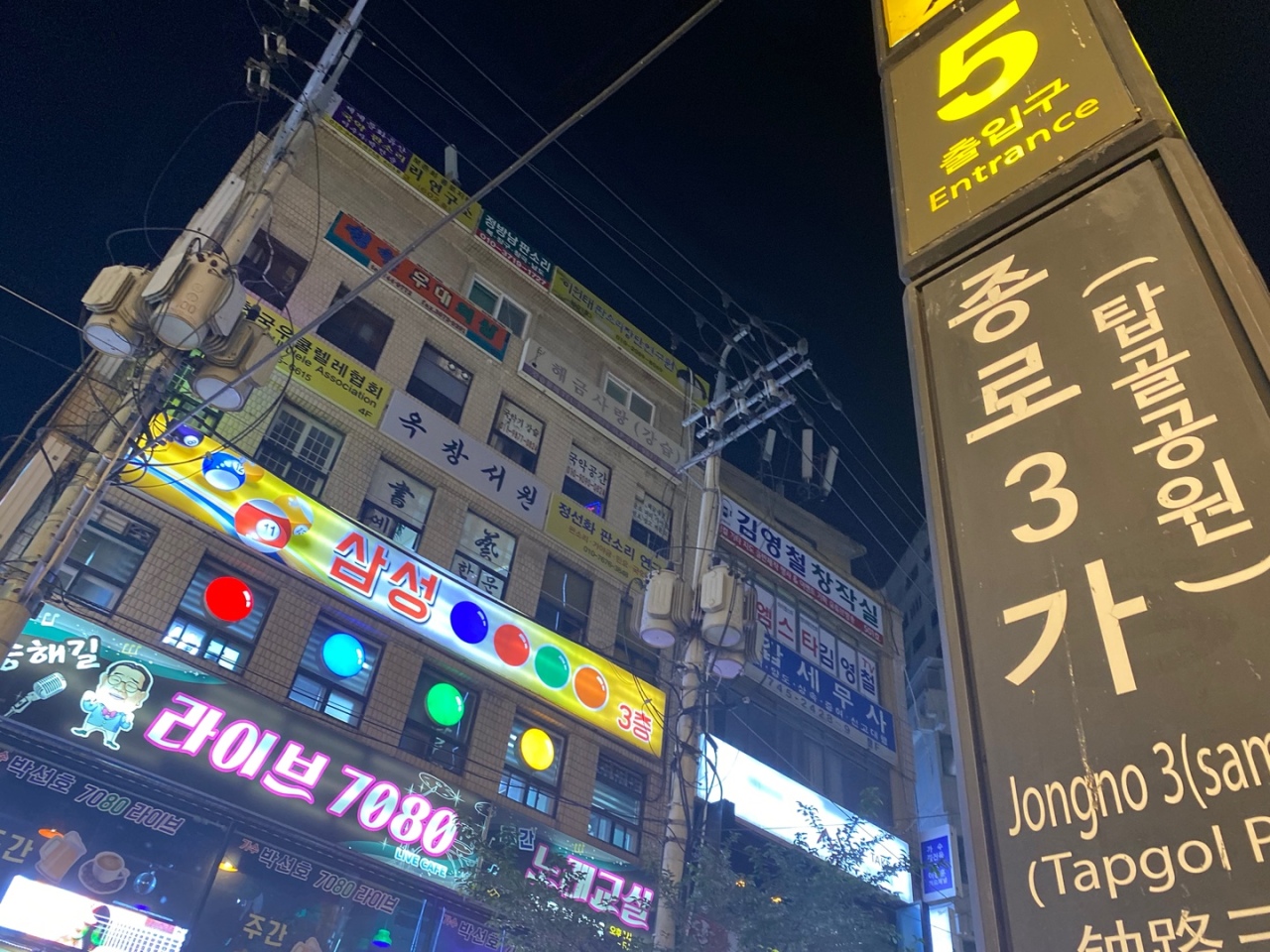
Jongno 3-ga has 16 exits with three subway lines running through the station.
The sheer number speaks volumes for the significance of Jongno-gu, which is central to the lives of people in Seoul. Meaning Bell Street, with the bell in the name referring to Bosingak that sits at Jonggak intersection, Jongno is one of the busiest neighborhoods in the South Korean capital alongside Gangnam and Hongdae.
Many of the city’s tourist attractions are located here. There’s Insa-dong, a bustling street filled with traditional cafes and shops. Gyeongbokgung Palace, the main royal palace of the Joseon dynasty built in 1395 and Jongmyo Shrine -- a UNESCO World Cultural Heritage site and the oldest royal Confucian shrine preserved -- the list goes on.
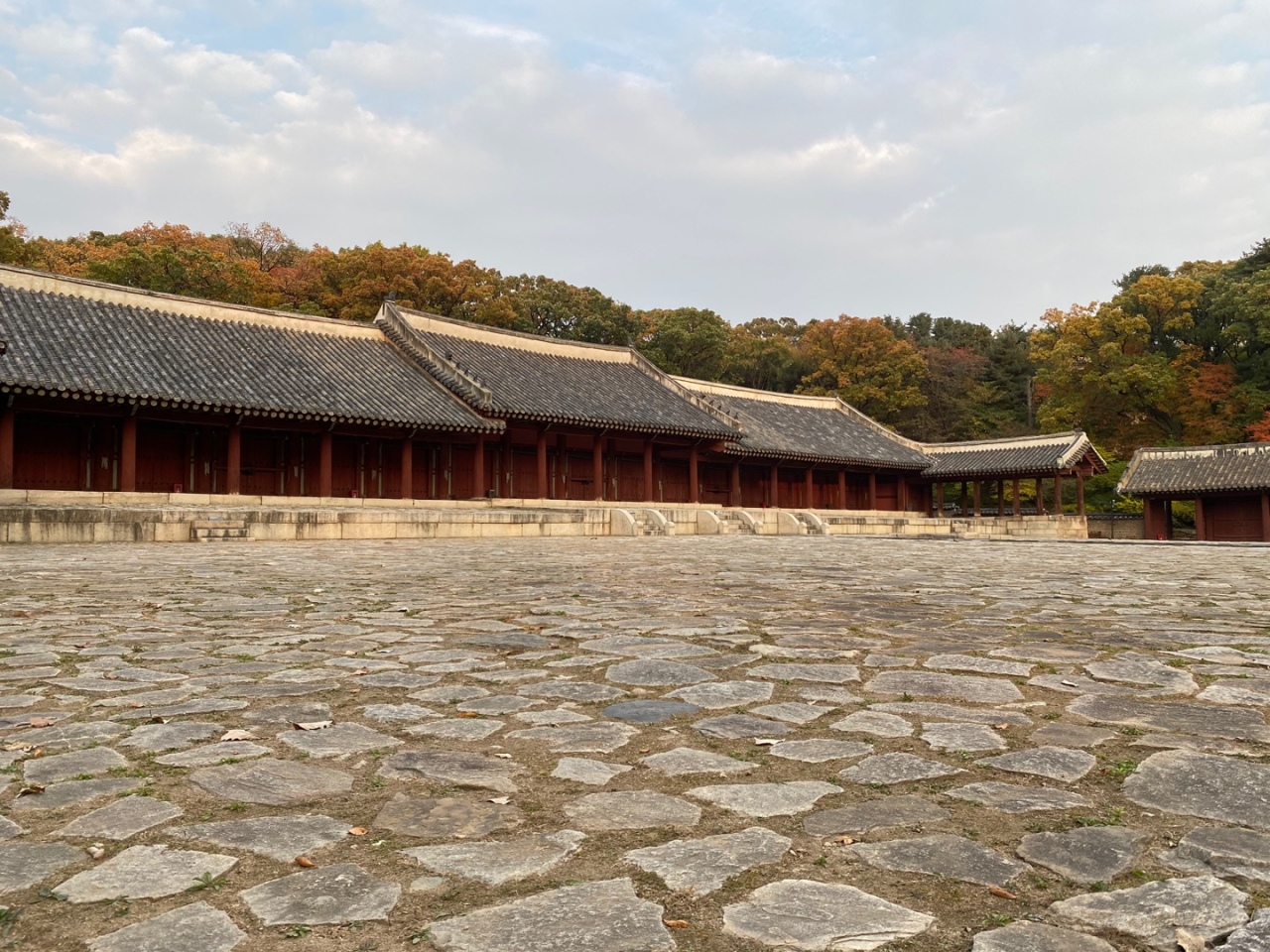
“Since the Joseon Dynasty was founded and the capital was moved to Seoul, which was previously known as Hanyang, Jongno-gu has played a significant role as a central part of the city in terms of politics, economy and culture for nearly 600 years until this day,” a representative at the Jongno Foundation for Arts and Culture said.
“Major public institutions are located in Jongno, which boasts the highest administrative rank out of the offices representing 25 districts in the city.”
The district has many faces. To begin with, it has the most number of Seoul’s Future Heritage sites – designated historical sites and objects to be preserved for future generations to enjoy, the official said.
When you come out of Exit No. 1 and walk straight towards Bosingak where the annual New Year‘s Eve bell-ringing ceremony is held each year, you will soon see high rises including Jongno Tower, a 33-story office building with an elevated ring-shaped top floor.
But behind the main streets filled with modern buildings are decades-old rice cake shops and narrow alleyways laden with hanoks – traditional Korean houses – renovated as cafes and clothing stores, underlying the city’s charming mixture of old and new.
Ikseon-dong, Nakwon-dong and Tapgol Park
Ikseon-dong, located outside Exit No. 5 of Jongno 3-ga Station, has emerged as one of the hottest neighborhoods in the city for young people.
The Ikseondong Hanok Village is always full of young couples and tourists sometimes dressed in modern-style hanbok hoping to snap a perfect Instagram post. The nearly 800-meter-long alleyway has no shortage of shops, cafes and restaurants of international backgrounds but all in traditional Korean houses. At night, the street lights up, creating a cozy atmosphere.
In 2018, the area was removed from the “redevelopment zone” by the Seoul Metropolitan Government, a move designed to maintain hanoks and bring in height restrictions for buildings.
Nakwon-dong, which sits next to Ikseon-dong, is another charming neighborhood. Built in 1970, Nagwon Arcade houses over 200 music instrument shops and related services. Restaurants in the neighborhood typically serving makgeolli (traditional Korean rice wine) and homely Korean dishes such as pajeon (savory pancake) become a popular choice for visitors at night.
Near the arcade sits Songhae-gil, a street dedicated to renowned entertainer and TV host Song Hae. The 95-year-old celebrity has hosted “National Singing Contest” for 34 years since 1988.
“Major public institutions are located in Jongno, which boasts the highest administrative rank out of the offices representing 25 districts in the city.”
The district has many faces. To begin with, it has the most number of Seoul’s Future Heritage sites – designated historical sites and objects to be preserved for future generations to enjoy, the official said.
When you come out of Exit No. 1 and walk straight towards Bosingak where the annual New Year‘s Eve bell-ringing ceremony is held each year, you will soon see high rises including Jongno Tower, a 33-story office building with an elevated ring-shaped top floor.
But behind the main streets filled with modern buildings are decades-old rice cake shops and narrow alleyways laden with hanoks – traditional Korean houses – renovated as cafes and clothing stores, underlying the city’s charming mixture of old and new.
Ikseon-dong, Nakwon-dong and Tapgol Park
Ikseon-dong, located outside Exit No. 5 of Jongno 3-ga Station, has emerged as one of the hottest neighborhoods in the city for young people.
The Ikseondong Hanok Village is always full of young couples and tourists sometimes dressed in modern-style hanbok hoping to snap a perfect Instagram post. The nearly 800-meter-long alleyway has no shortage of shops, cafes and restaurants of international backgrounds but all in traditional Korean houses. At night, the street lights up, creating a cozy atmosphere.
In 2018, the area was removed from the “redevelopment zone” by the Seoul Metropolitan Government, a move designed to maintain hanoks and bring in height restrictions for buildings.
Nakwon-dong, which sits next to Ikseon-dong, is another charming neighborhood. Built in 1970, Nagwon Arcade houses over 200 music instrument shops and related services. Restaurants in the neighborhood typically serving makgeolli (traditional Korean rice wine) and homely Korean dishes such as pajeon (savory pancake) become a popular choice for visitors at night.
Near the arcade sits Songhae-gil, a street dedicated to renowned entertainer and TV host Song Hae. The 95-year-old celebrity has hosted “National Singing Contest” for 34 years since 1988.
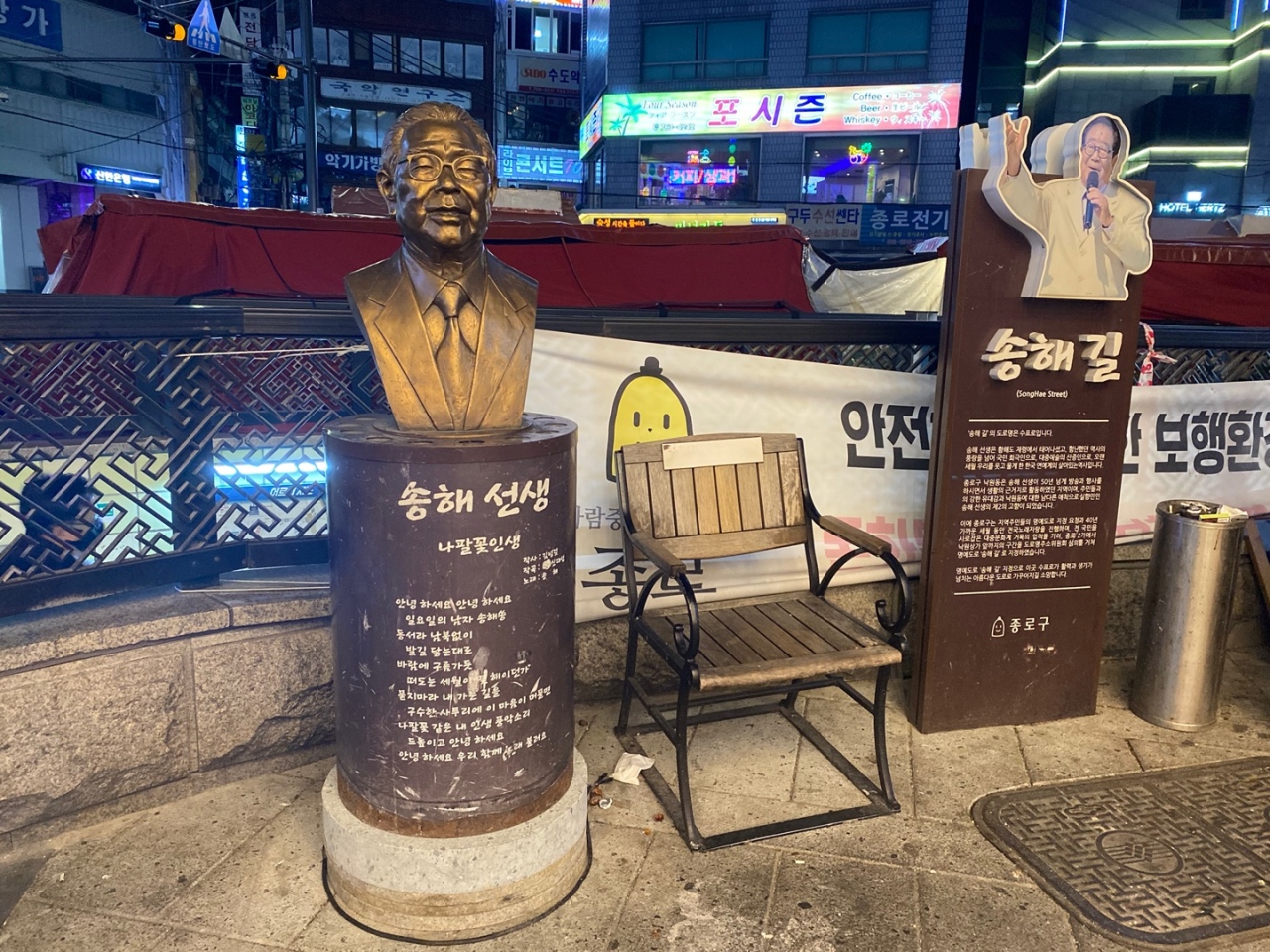
Nakwon-dong is where Song used as his base during his career spanning over 50 years, according to the committee behind the street.
Tapgol Park also reopened earlier this year after being shut down for nearly two years due to the pandemic. The small public park has been a crucial part of life for many senior citizens and homeless people.
Outside the park, you can often see older men get together and play janggi – a Korean style of chess.
A thriving LGBT neighborhood
Hidden behind the main streets of Nakwon-dong and Ikseon-dong are scores of bars catering to LGBT customers scattered across the neighborhood.
Though things may not be as out in the open as other LGBT districts in the world, gay couples holding hands or business establishments with a rainbow flag are not a rare sight here.
Chun Jung-nam, an LGBTQ+ activist, opened the gay bar Friends in 2004.
“Friends is a bar with a quiet atmosphere that serves cocktails and wine, mainly catering to gay men but also various sexual minorities and their allies,” he said.
Tapgol Park also reopened earlier this year after being shut down for nearly two years due to the pandemic. The small public park has been a crucial part of life for many senior citizens and homeless people.
Outside the park, you can often see older men get together and play janggi – a Korean style of chess.
A thriving LGBT neighborhood
Hidden behind the main streets of Nakwon-dong and Ikseon-dong are scores of bars catering to LGBT customers scattered across the neighborhood.
Though things may not be as out in the open as other LGBT districts in the world, gay couples holding hands or business establishments with a rainbow flag are not a rare sight here.
Chun Jung-nam, an LGBTQ+ activist, opened the gay bar Friends in 2004.
“Friends is a bar with a quiet atmosphere that serves cocktails and wine, mainly catering to gay men but also various sexual minorities and their allies,” he said.
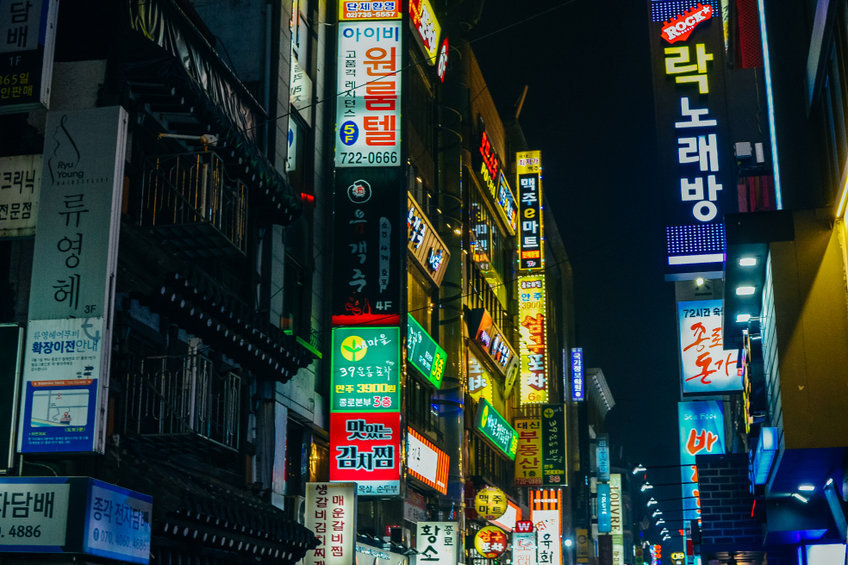
As Ikseon-dong emerged in recent years as a dating hotspot for straight couples, concerns over gentrification grew. Some members of the LGBT community also feel that their space has been “invaded,” Chun said.
Following the lifting of COVID-19 social distancing rules, nightlife in Ikseon-dong appears to be returning, with street food vendors and outdoor tables outside restaurants filled with drinks and chatting. The same goes for the gay bars.
“Though the pandemic is not over and we are yet to return to pre-pandemic levels, our business has enjoyed a major recovery compared to when social distancing rules were in place,” Chun said.
(hyunsu@heraldcorp.com)
Following the lifting of COVID-19 social distancing rules, nightlife in Ikseon-dong appears to be returning, with street food vendors and outdoor tables outside restaurants filled with drinks and chatting. The same goes for the gay bars.
“Though the pandemic is not over and we are yet to return to pre-pandemic levels, our business has enjoyed a major recovery compared to when social distancing rules were in place,” Chun said.
(hyunsu@heraldcorp.com)












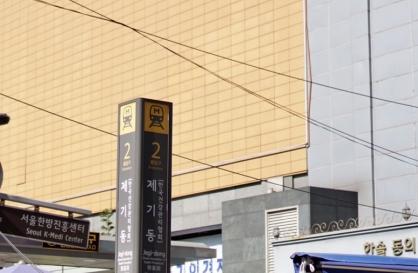
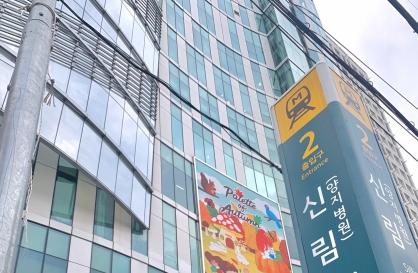
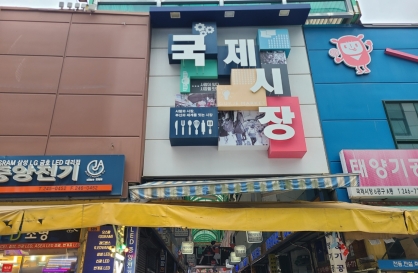
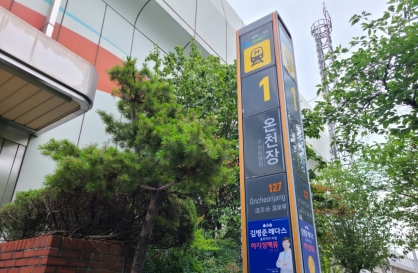
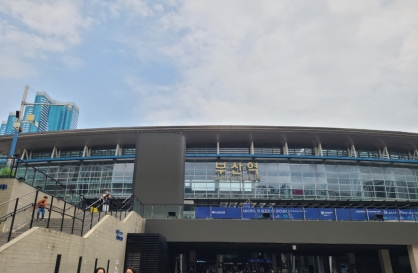






![[Today’s K-pop] Treasure to publish magazine for debut anniversary](http://res.heraldm.com/phpwas/restmb_idxmake.php?idx=642&simg=/content/image/2024/07/26/20240726050551_0.jpg&u=)